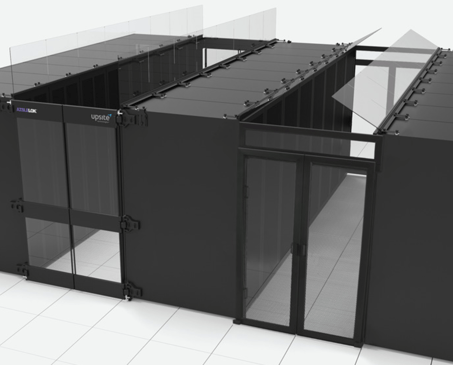To put it simply, managing airflow at the Row level refers to improving cold aisle and hot aisle separation, and is typically done once you’ve made improvements at the Rack level (e.g. blanking panels) and Raised Floor level (e.g. brush grommets). While many people quickly navigate to containment when discussing row airflow management, it’s important to note that there are other areas in the row that need to be addressed when managing airflow at this level. Furthermore, when it does come to containment, knowing the solutions that are available to you and being able to identify what type of containment is best suited for your data center will help you not only save time, but also money.
Before we jump into the specifics, one thing to point out is that the goal of all airflow management initiatives is to improve the intake air temperatures to IT equipment. More specifically, to reduce the highest intake air temperatures so that all intake temperatures are as low and even as possible. This, in return, enables you to make changes to the controls of the cooling infrastructure, such as increasing temperature set points, lowering fan speeds, or in many cases, turning cooling units completely off. Making these changes is the key to achieving many of the benefits of airflow management, like improved efficiency, increased capacity, and reduced operating costs. To maximize these benefits, managing the airflow at all levels in the data center (Raised Floor, Rack, Row, and Room) is very important.
Row Airflow Management Best Practices
As noted above, Row airflow management refers to improving cold aisle and hot aisle separation. To do this effectively, there are a few areas that need to be addressed:
Block open spaces underneath cabinets.
You might not think it, but the small space between the bottom of an IT rack and the raised floor/slab can play a profound role in airflow management and on IT equipment intake temperatures. Usually ranging in size from half an inch to two inches, this space allows IT equipment exhaust air to travel underneath the rack and ultimately back into the IT equipment air inlets. This is referred to as exhaust air recirculation and when it occurs, can cause several problems for the data center: increased intake temperatures, hot spots, and a likelihood of IT equipment failure in the long-term if the issue is not addressed. All of this will require more cooling units to be running or fan speeds to be higher than would otherwise be necessary. It also necessitates lower cooling unit temperature set points to overcome the mixing and keep your IT equipment intake air temperatures within the desired limits. To address this, blocking off these open spaces with under rack panels is an easy and cost-effective solution that can have a profound impact on reducing IT equipment inlet temperatures.
Seal spaces in cabinet rows where there are missing cabinets or gaps between cabinets.
This may seem like an obvious point, but there are many cases where large gaps in between cabinets are present (either due to a building column or a cabinet that has been removed) and have not been sealed off. Sealing these gaps is very important for a couple reasons. Similar to gaps underneath racks, exhaust air recirculation can occur, which as we know will increase IT equipment intake temperatures and reduce your equipment’s reliability. Secondly, a large volume of conditioned supply air can be lost, a phenomenon referred to as bypass airflow. This is when any amount of supply air bypasses IT equipment and returns to the cooling unit unutilized. Similar to exhaust air entering the cold aisle, the loss of conditioned supply air requires more cooling units to be running or higher fan speeds to overcome the loss of conditioned airflow volume. To address this issue, blocking off any open space in between cabinets, whether it’s just a couple inches or a few feet, with rack gap panels or sealing foam will dramatically impact IT equipment intake temperatures at a reasonable cost.
-
- In cases where there is a missing cabinet at the end of an aisle, causing uneven aisle lengths, there are innovative solutions available to address this issue. Referred to as an adjustable mounting post, this simple solution provides a structural support surface to shore up uneven rows by enabling the attachment of rack gap panels and aisle-end doors.
Continue reading
- In cases where there is a missing cabinet at the end of an aisle, causing uneven aisle lengths, there are innovative solutions available to address this issue. Referred to as an adjustable mounting post, this simple solution provides a structural support surface to shore up uneven rows by enabling the attachment of rack gap panels and aisle-end doors.




.png?width=58&height=58&name=X_logo_2023_(white).png)
